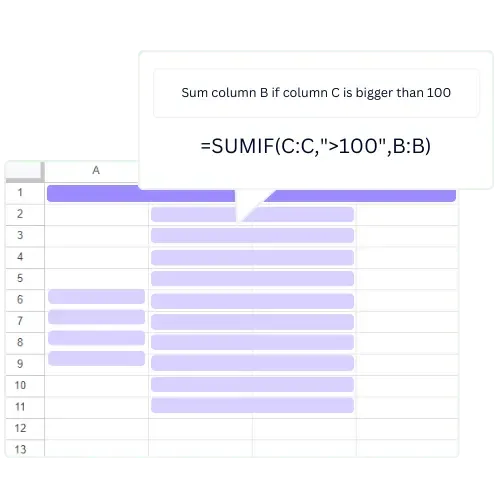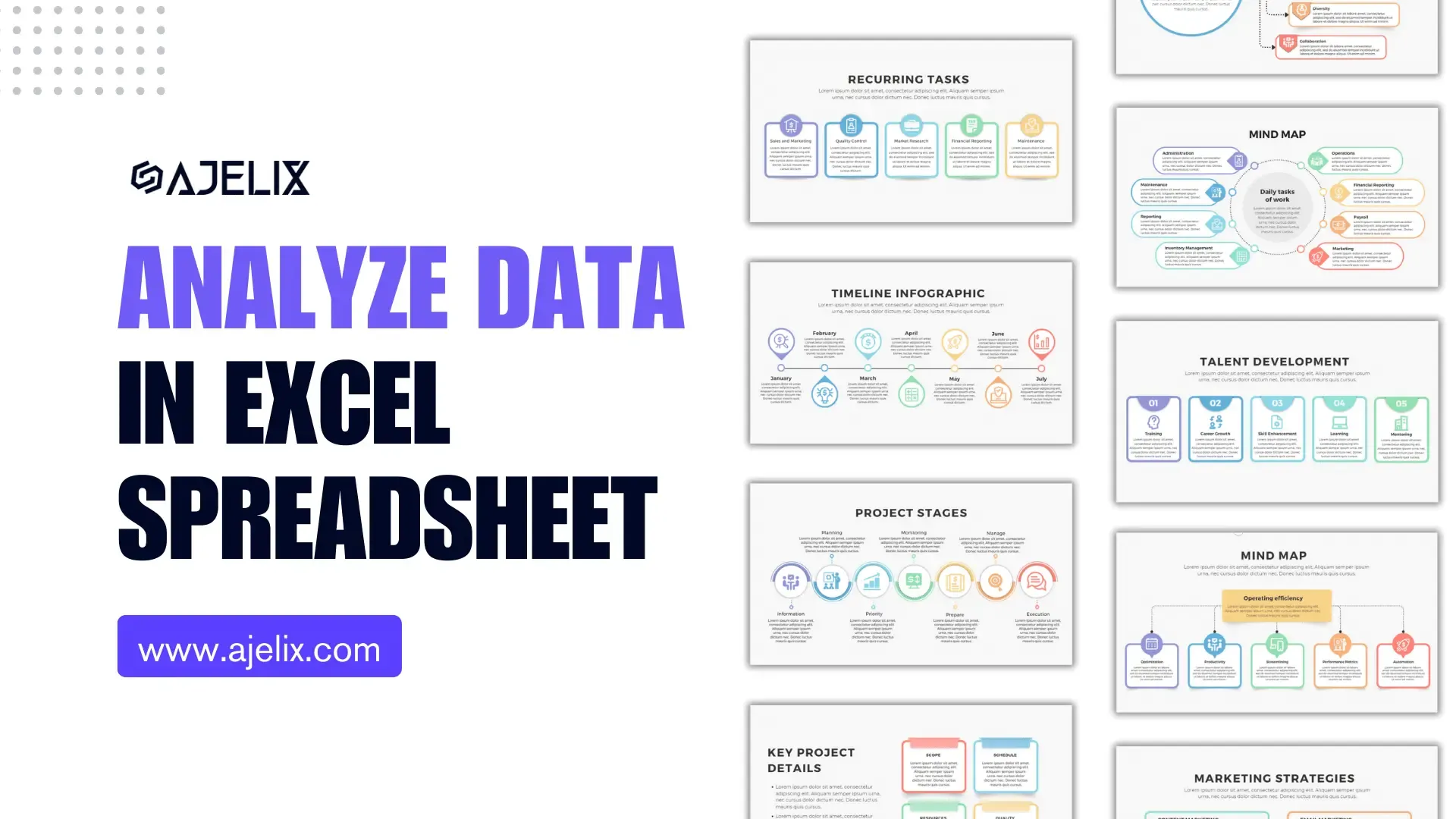- Home
- Data Visualization
- Tools
- AI Data Analyst
- Excel Formula Generator
- Excel Formula Explainer
- Google Apps Script Generator
- Excel VBA Script Explainer
- Excel VBA Script Generator
- Excel VBA Code Optimizer
- Excel VBA Code Debugger
- Google Sheets Formula Generator
- Google Apps Script Explainer
- Google Sheets Formula Explainer
- Google Apps Script Optimizer
- Google Apps Script Debugger
- Excel File Translator
- Excel Template Generator
- Excel Add-in
- Your Virtual AI Assistant For Excel Spreadsheets
- AI Answer Generator
- AI Math Solver
- AI Graph Generator
- AI SQL Generator
- Pricing
- Resources
Explore other articles
- 7 Productivity Tools and AI Plugins for Excel
- Top 5 Julius AI Alternatives for Data Analysis in 2026
- No Code Analytics: Top Tools in 2026
- Automation Tools for Excel in 2026: Built-In & Third-Party
- 5 Healthcare Data Analytics Trends 2026
- Best Analytics Platform For Startups In 2026
- 15 Best AI Tools For Startups In 2026 We Tried
- 7 Best AI Tools for Excel Data Analysis (2026 Comparison)
- AI Data Intelligence For Workspace
- Conversational Analytics & AI
Try AI in Excel
Trying to figure out How to Export data from Excel to the file format you need can sometimes be a struggle.
However, it is very important to master exporting data from Excel to other formats, as it can be a convenient way to share information with others who may not have access to Microsoft Excel.
There are a few different options available for exporting data from Excel, including CSV and HTML. In this article, we will explore how to export data from Excel to these formats, as well as some tips and best practices for doing so.
Which Excel File format is best for you?
Good question.
Well, the thing is that Excel offers a variety of file formats for saving your work. It all depends on your needs.
The most common formats are .xlsx and .xls, which keep all features like formulas, formatting, and charts intact. These are great for regular spreadsheet use and compatibility with Excel.
If you need a simpler format, Excel supports text-based files like .csv and .txt. These strip away formatting and save data in a plain structure, making them useful for importing into databases or other programs. They’re especially handy for working with raw data.
Beyond that, Excel lets you save in other formats like .xlsm for macros, .pdf for easy sharing, .ods for OpenOffice, and even .html for creating web-friendly versions of spreadsheets.
Feel free to browse through all Excel Formats on the official Microsoft website.
Exporting Excel to CSV
To begin, let’s discuss what is CSV? CSV file format is a simple text format that can be easily read and imported by a wide variety of applications, including spreadsheet programs, text editors, and even databases.
What CSV stands for? Comma Separated Values
…and what is CSV used for? CSV files are often used to transfer data between different software applications, and they are a popular choice for exporting data from Excel because they are so easy to work with.
How to export Excel data to CSV?
- open the workbook that contains the data you want to export.
- select the cells that you want to include in the CSV file. ou can do this by clicking and dragging to highlight the cells, or by holding down the “Ctrl” key and selecting individual cells.
- Once you have selected the cells, go to the “File” menu and choose “Save As.
- In the “Save As” window, select “CSV (Comma Delimited)” from the “Save as type” dropdown menu
- Give the file a name and choose a location to save it, then click “Save.”
Export from Excel to HTML
Exporting data to an HTML file is a bit more complex than exporting to a CSV file, but it is still relatively straightforward.
What HTML stands for? HyperText Markup Language
…and what is HTML used for? HTML is a programming language used for website creation, and an HTML file is a text file that contains HTML code.
When you export data from Excel to an HTML file, the data is stored in a table within the HTML file. This can be useful if you want to share your data with someone who does not have Excel and needs to view it in a web browser. Companies often seek assistance from experts in website design and development services to handle this programmatic part.
So, how to convert data from Excel to HTML?
To export data to an HTML file in Excel, first open the workbook that contains the data you want to export. Next, select the cells that you want to include in the HTML file. As with the CSV file, you can do this by clicking and dragging to highlight the cells, or by holding down the “Ctrl” key and selecting individual cells. Once you have selected the cells, go to the “File” menu and choose “Save As.” In the “Save As” window, select “Web Page” from the “Save as type” dropdown menu. Give the file a name and choose a location to save it, then click “Save.”
Exporting data from Excel to CSV or HTML files is a simple process that can be useful in a variety of situations. Whether you are sharing data with colleagues, importing data into another application, or just want to back up your workbook. Exporting to these formats can be a convenient way to do so.
Tips for exporting data from Excel
Here are a few tips to keep in mind when exporting data from Excel:
- Make sure your data is organized and formatted correctly before you export it. This will make it easier for others to understand and use your data.
- Consider using named ranges to make it easier for others to identify specific data within your workbook.
- Use the “Save As” function to create a new file, rather than overwriting an existing file. This will ensure that you have a copy of your original data in case something goes wrong.
- Test your exported file to make sure it is working as expected. This is especially important if you are sharing the file with others or importing it into another application.
Exporting data from Excel to CSV or HTML files is a useful skill to have, and with a little bit of practice, it is easy to master. Whether you are working with a small dataset or a large one, exporting data from Excel can be a quick and convenient way to share information with others or import it into another application. By following the steps outlined in this article and keeping these tips in mind, you will be able to export data from Excel to CSV and HTML files with confidence.
It is worth noting that Excel also allows you to export data to other file formats, such as PDF (Portable Document Format) and XLSX (Microsoft Excel Open XML Document). These file formats may be useful in different situations. You can learn more about them by exploring Excel’s “Save As” options or consult the documentation for your version of Excel.
Conclusion
Exporting data from Excel to CSV and HTML files is a simple process that can be useful in a variety of situations. Whether you are sharing data with colleagues, importing data into another application, or want to back up your workbook, exporting to these formats can be a convenient way to do so. By following the steps outlined in this article and keeping these tips in mind, you will be able to export data from Excel with ease.
Learn more about Excel and Google Sheets hacks in other articles. Stay connected with us on social media and receive more daily tips and updates.
Speed up your spreadsheet tasks with Ajelix AI in Excel

















